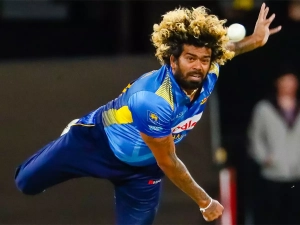Death Bowling - Hero or Villain? It’s A Real Art Form
With the amount of T20 competitions being played around the world from World Cups, IPL, Big Bash and the new developments of the Hundred in England and now various countries developing their own franchise tournaments. The opportunities for players to showcase their skills is phenomenal.
With all the big hitting batters getting 90% of the attention throughout for their boundary hitting and inventive shots. Where is the appreciation for the bowlers who have the hardest role?!
Front line bowlers pretty much bowl their 4 overs in the most challenging stages of the game, from the opening power play to the death overs where batters are looking to launch everything out of the ground.
That’s why bowling at the death really is an art. Not only do you need to have several variations, you need to be able to execute them to perfection as the margin for error is becoming increasingly smaller.
UNDERRATED HEROES
Bowlers really are the underrated/ under-appreciated heroes of the game. Yes we want to see boundaries as spectators but we also want to appreciate and witness the real battle between bat and ball. Nothing beats a real tense period of play!
The real master of death bowling is without a doubt Lasith Malinga. With his unique action providing one challenge to batters but his ability to execute his skills from yorkers to slower balls in the tight stages of the game was outstanding. His ability to deceive a batter was incredible, yes his action was quirky but with the game now full of analysts and video feedback, batters have the opportunity to look for clues in his bowling routine and action to try and pick what’s coming down. This is where he is world class, to have a sustained career in T20 cricket in which he took 390 wickets in 295 career matches – 107 of which came in 84 T20Is - and enjoyed spells in the Big Bash, Caribbean Premier League, T20 Blast and Bangladesh Premier League. However, his greatest success came in the IPL where he made 122 appearances for Mumbai Indians, taking 170 wickets, and won four titles.
I’m sure we have all seen the video of his 4 wickets in 4 balls against South Africa and New Zealand. Impressive!!
Of the current crop of players there are a very few who have recently become bowling powerhouses of the T20 game. Jasprit Bumrah is probably the closest to the Malinga effect. His pace and varieties frequently getting him wickets but also has established himself as a difficult bowler to score off. Along with Rashid Khan who has rapidly turned himself into a T20 star.
PACE OR SPIN
The modern game debate!!
Spin bowlers have now found themselves as very valuable players in T20 cricket. The emergence of players like Rashid Khan, Adil Rashid and Adam Zampa have made leg spinners in particular a golden breed. Their ability to spin the ball whilst bowling flat through the air makes them difficult to hit. Yes they will get blasted out of the ground occasionally but they are always asking the question and creating problems for batter in all conditions.
Mystery spin is the new king of spin bowling. The ability to turn the ball both ways with very little indication is a real art form. From the master of mystery spin Muralitharan to Sunil Narine and Ravi Ashwin who continue to pick up wickets wherever they play with their doosra and carrom ball.
Off spinners typically don’t turn the ball as much or have as much of a variation but that doesn’t mean they can’t be effective. If you look in the modern game, Chris Green burst onto the scene for Sydney Thunder many BBL’s ago and has now gone on to represent franchises all over the world. He built his game out around perfecting his plans. He would bowl flat, fast off spin looking to get it in the yorker length from around the wicket targeting the toes of batters. The around the wicket angle mean it’s very hard for batters to score 360 degrees. What Green is looking to do is to reduce the scoring zones, he will stack the leg side and protect the straight and leg side boundary which leads to batters trying to cut and reverse sweep him. But with the pace he bowls it is very hard to sweep and also from the angle is very hard to cut through the off side. This just shows you don’t need all the skills in the world but just the ability to really nail those banker deliveries but also set your field accordingly.
More recently Josh Hazlewood has jumped to the number 1 ranked T20 bowler in the world, which shows that there is no harm in hitting a good length at pace with subtle variations. So remember to nail your stock ball first up and then use those variations on the side when needed.
TACTICAL AWARENESS
As I touched on briefly there with Greeny. Not only do bowlers need to execute their skills they also have to set their fields accordingly. Death bowlers in particular are all about restricting boundaries. So knowing where the ball is most likely to go if they nail their delivery is the first part to building that field, also understanding where its most likely to go if you slightly miss your execution. Pair that with also knowing that you may make subtle changes based on the delivery and batsman. Don’t just change your delivery plans and leave the field as it is and hope for the best. This is very common especially in junior cricket where the coach/ captain sets a basic ring field at the start and then doesn’t adjust based on the bowlers style or the batters ability and strengths. So it’s really important to learn and familiarise yourself with the fielding positions as a junior cricketer so you can make those changes with confidence.
Hence why Eoin Morgan has really taken captaincy to a new level with the England white ball team with his tactical awareness and in more local news maybe why Aaron Finch hasn’t been dropped from the Australia side with his current spell of poor form…..? (Sorry, I couldn’t resist opening that can of worms!)
The modern pace option is now the wide yorker, trying to hit the off side wide line. Most of the batsmen look to slog at the death overs and having to reach way outside the off stump reduces the chances of a solid connection. Also, if the batsman moves towards the off-side as the ball is delivered, and misses a ball bowled outside of the wide line, it shall not be called a wide. This forces batters into playing it or run the risk of leaving it and not getting the extra.
Not knowing the rule or mainly forgetting it in the heat of the game, sometimes batsmen would shuffle across and leave a wide delivery hoping to get an extra only to be disappointed. What are the chances of batsmen leaving a full swinging yorker on the middle stump? The art of death bowling perhaps has a new face…..?
EXPERIMENT & PRACTICE
So as young bowlers, ACI certainly recommend to really challenge yourself to learn and develop new skills. The nets are the perfect time to practise your back of the hand slower ball or your googly as its how we learn and develop those skills. So have fun with it, then when you feel comfortable you can bring it out in a game and deceive batters and be the hero of the game! But at the same time don’t neglect the basics!
Hopefully we can help develop the next round of future death bowling stars and encourage players to take the bull by the horns and want to be the player the team turns to in the tough situations! Have fun experimenting and good luck for the season!!
Author: Dan Miles
NSW Programs Manager



